Odour Control
Odour control in water and wastewater treatment is essential to improve air quality, reduce the impact on surrounding communities, and comply with environmental regulations. The most common sources of odours in wastewater treatment are hydrogen sulphide (H₂S), ammonia, volatile organic compounds (VOCs), and other sulphur-based compounds that are produced during the breakdown of organic matter. Here are several odour control solutions commonly used in water and wastewater treatment that we can implement in our company:
Biofiltration
- How it Works: In this odour control process, air containing odorous compounds is passed through a biofilter medium, such as compost, peat, or wood chips, which hosts a diverse community of microorganisms. These microorganisms metabolise the odorous compounds, breaking them into non-volatile byproducts like water and carbon dioxide. The performance of biofiltration is influenced by factors such as temperature, moisture content, pH, and nutrient availability, which help maintain an optimal environment for microbial activity.
- Advantages: Eco-friendly, effective for low-to-moderate concentrations of odorous compounds, and has low operating costs.
- Applications: Suitable for treating a wide range of odorous emissions, particularly H₂S.
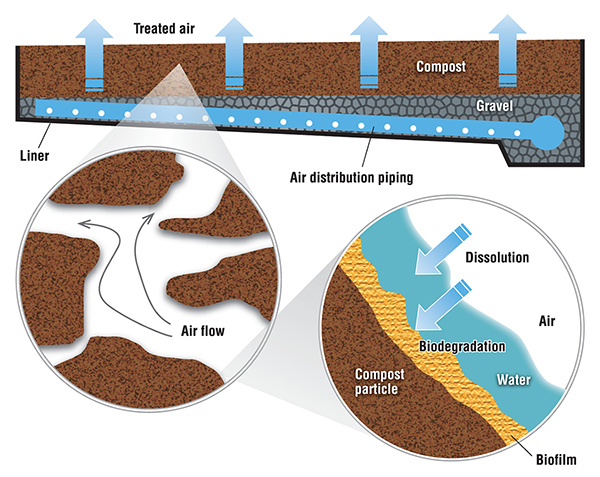
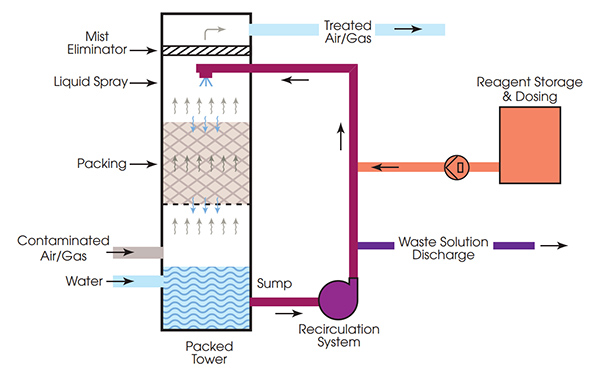
Chemical Scrubbing
- How it Works: In this odour control process, odorous air is passed through a scrubber tower where it comes into contact with a liquid chemical solution, such as sodium hydroxide, sodium hypochlorite, or hydrogen peroxide. These chemicals react with the odorous compounds, neutralising them and converting them into less harmful substances like salts, water, and non-volatile byproducts. The effectiveness of chemical scrubbing is influenced by factors such as gas flow rate, contact time, pH, and the concentration of the scrubbing solution.
- Advantages: It is effective for high concentrations of hydrogen sulphide and ammonia, has a flexible design, and can rapidly remove odours.
- Applications: Commonly used in municipal wastewater treatment plants and industrial applications.
Activated Carbon Adsorption
- How it Works: In this odour control process, air containing odorous compounds passes through a bed of activated carbon with a large surface area and porous structure that adsorbs and traps the odour-causing molecules. The performance of activated carbon depends on factors such as the type of carbon used, humidity levels, temperature, and the concentration of odorous gases. It is especially effective in handling low concentrations of odours and is commonly used for localised or point-source odour control.
- Advantages: Simple operation, high efficiency for VOCs and H₂S, and minimal maintenance, versatility and reliability.
- Applications: Ideal for small-scale or localised Odour control.
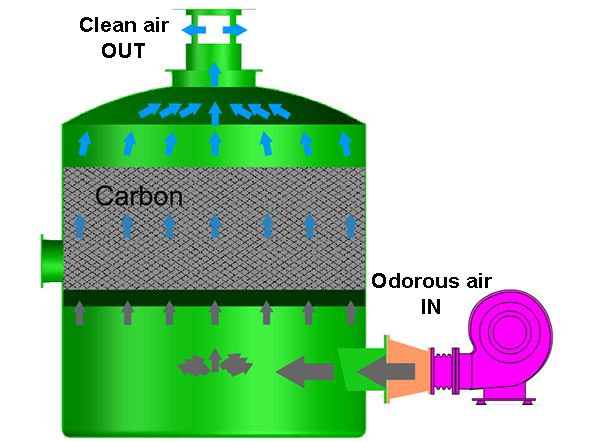

Ozone Oxidation
- How it Works: In this odour control process, ozone (O₃), a strong oxidising agent, is introduced into the air stream containing odorous gases. The ozone reacts with and breaks down the odour-causing molecules, converting them into less harmful substances like carbon dioxide, water, and other inert byproducts. The performance of ozone oxidation depends on factors such as ozone dosage, gas flow rate, and contact time, which directly influence the efficiency of odour removal. Ozone is highly effective in eliminating odours even at low concentrations, and it leaves no harmful residues in the treated air. However, careful control of ozone levels is required to avoid the formation of unwanted byproducts or excessive ozone, which can pose health and safety risks.
- Advantages: Effective at oxidizing a wide range of odorous compounds, including VOCs and H₂S. Ozone does not leave harmful residues.
- Applications: Suitable for both wastewater treatment plants and industrial odour control.
Biotrickling Filters
- How it Works: Biotrickling filters combine biological and chemical processes. Odorous air passes through a packed bed where microorganisms degrade the odorous compounds. In this process, odorous air passes through a packed bed, typically made of synthetic materials, where microorganisms degrade the odour-causing compounds. A nutrient-rich liquid continuously trickles over the bed to maintain optimal microbial growth and activity. The performance of biotrickling filters is influenced by factors such as airflow rate, pH, moisture content, and nutrient availability, all of which support the biological degradation of odorous compounds.
- Advantages: Effective for treating high concentrations of H₂S and VOCs. It is compact and requires less space than biofilters.
- Applications: Used in industrial facilities, large municipal wastewater treatment plants, and sludge treatment operations.
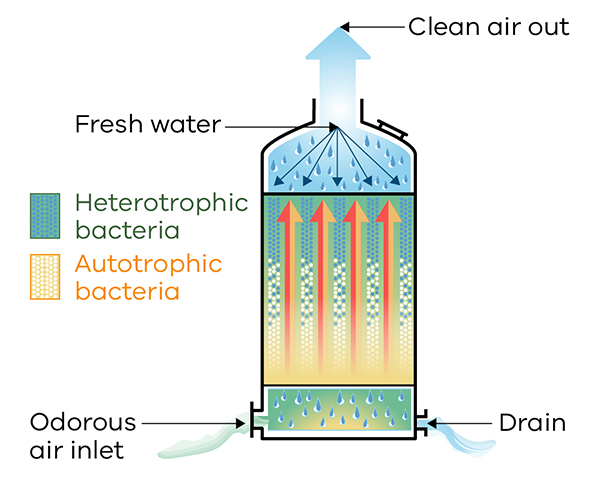
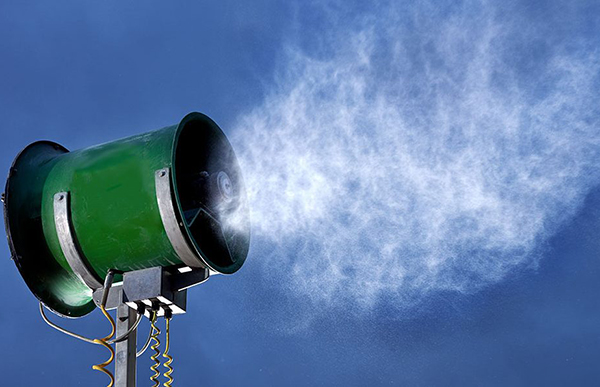
Neutralisation Using Enzymes or Odour Neutralisers
- How it Works: This odour control method applies enzyme-based solutions or specially formulated neutralisers, often sprayed directly into the air or injected into the water, to chemically react with odorous compounds and neutralise them. Unlike masking agents that cover up odours, neutralisers break down and eliminate the odour-causing molecules at the source. The performance of this approach depends on factors such as the concentration of odorous compounds, the type of neutraliser or enzyme used, and the application method. It is especially effective for low-to-moderate odour concentrations and is easy to implement without requiring large infrastructure or complex systems.
- Advantages: Simple to apply and eco-friendly. Can be used for localised odour control without complex systems.
- Applications: Often used in small-scale facilities or for short-term odour control.
Covered and Aerated Treatment Processes
- How it Works: By covering tanks or treatment units such as anaerobic digesters, clarifiers, or sludge storage areas, the escape of odorous compounds, like hydrogen sulphide (H₂S) and volatile organic compounds (VOCs), is significantly reduced. Additionally, aeration enhances oxygen levels in the wastewater, encouraging aerobic microbial activity, leading to the faster and more efficient breakdown of organic matter without producing strong odours typically associated with anaerobic conditions. The performance of this method depends on factors such as the type of cover material, airflow rates, and the effectiveness of the aeration system. Aeration also helps prevent the buildup of anaerobic conditions, a major source of odour generation. This method is particularly effective in large wastewater treatment plants and industrial facilities.
- Advantages: Reduces the release of odours at the source and helps improve the overall efficiency of wastewater treatment.
- Applications: Common in primary treatment processes and sludge management.

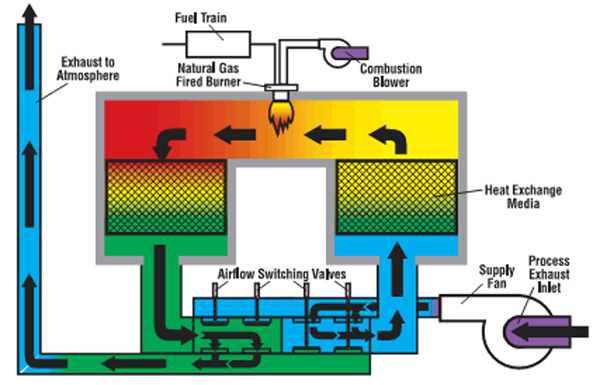
Thermal Oxidation (Incineration)
- How it Works: In this odour control approach, odorous air is combusted at high temperatures (typically between 1,200°F and 2,200°F, which breaks down odour-causing compounds such as hydrogen sulphide (H₂S), volatile organic compounds (VOCs), and other organic materials into harmless byproducts like carbon dioxide, water vapour, and trace amounts of non-toxic ash. The performance of thermal oxidation depends on maintaining high temperatures, sufficient oxygen supply, and adequate residence time to ensure complete combustion of the odorous compounds. This method is extremely efficient, achieving over 99% odour removal in many cases, making it one of the most effective solutions for severe odour issues.
- Advantages: Very effective for high-strength odours and ensures complete destruction of organic compounds.
- Applications: Used in large industrial wastewater treatment facilities with high odour levels.
Best Practices for Odour Control
- Monitoring: Regular monitoring of odour levels and H₂S concentrations helps in early detection of odour issues.
- Preventive Maintenance: Keeping wastewater systems well-maintained prevents build-up of odorous substances.
- Source Control: Tackling odour at the source, such as industrial wastewater pretreatment, helps reduce overall emissions.
Our company’s experts are equipped to assist you in selecting and implementing the most effective odour control solutions tailored to your specific needs. Whether it’s evaluating the type and concentration of odorous compounds, managing budget constraints, optimising space utilization, or ensuring compliance with environmental regulations, our team has the experience and knowledge to guide you through the process. By leveraging a combination of these advanced technologies, we can help you achieve the best possible results for your facility’s odour control requirements.
